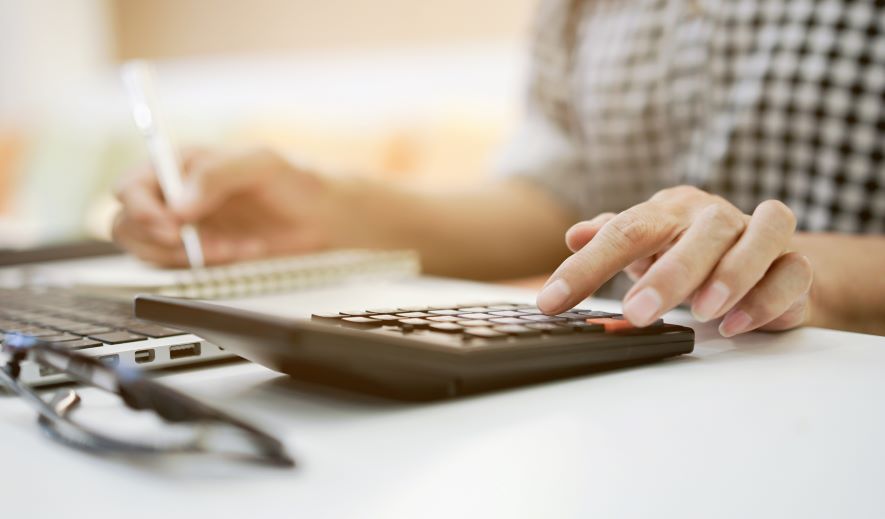You know your small business like the back of your hand. You’ve dedicated hours to its layout and organization, but do you feel the same about your balance sheet accounts?
A recent survey found that 40% of small businesses don’t hire an accountant or bookkeeper. If that’s you, knowing what accounts are on the balance sheet becomes your lifeline. Tax prep, loan applications, even figuring out if you can afford that new equipment — it all starts with understanding your financial health.
Key Takeaways
- Balance sheet accounts show what you own (assets), owe (liabilities) and your ownership stake (equity)
- Assets must equal liabilities plus equity — this equation always balances
- Key accounts include cash, receivables, inventory, payables and loans
- Banks review these ratios when evaluating loan applications
- Track changes over time to spot opportunities and avoid cash flow problems

What Is a Balance Sheet Account?
A balance sheet account tracks your company’s financial position at a specific point in time. Think of it like a financial snapshot that shows what your business owns, what it owes and what’s left over for you. Unlike your income statement, which shows money flowing in and out, your balance sheet shows where things stand right now.
What Are the Balance Sheet Accounts for a Small Business?
As a small business owner, you’re probably familiar with using folders — and maybe even filing cabinets—to keep your documents organized. Your balance sheet uses a similar system, only instead of folders, it’s separated by different accounts. So, which accounts appear on the balance sheet?
Components of Balance Sheet Accounts
- Cash. Money from your daily sales and transactions. When you sell something and get paid, it goes here.
- Deposits. Money you’ve paid upfront, like a security deposit for office space or equipment, that’s held by someone else until your agreement ends and is given back to you as long as you’ve upheld the terms in your agreement.
- Intangible assets. Nonphysical items like patents, copyrights, customer lists or broadcast rights.
- Short-term investments. Money you’ve invested that you can turn back into cash within a year.
- Accounts receivable. Money customers owe you for work you’ve already done or products you’ve delivered.
- Prepaid expenses. Bills you’ve paid early, like next month’s rent or a yearly insurance premium. You paid cash but haven’t used the service yet.
- Long-term investments. Stocks, bonds or real estate you plan to keep for more than a year. These are long-term assets that help build your net worth.
- Accounts payable. Money you owe suppliers or vendors.
- Accrued expenses. These can include wages, interest, utilities, repairs, bonuses and taxes.
- Credit card debt. Business credit card balances. The bigger the balance, the more it affects your company’s financial health.
- Short-term debt. Any money you need to pay back within a year, like payroll taxes or small business loan payments.
- Long-term debt. Loans or payments stretched over more than a year. Examples include bonds payable, long-term loans, lease obligations or convertible bonds.
- Owner’s equity. The initial money you put into the business to get it started.
- Retained earnings. Profits you’ve kept in the business instead of taking out as personal income.
- Additional paid-in capital. Extra money investors have put in beyond the basic stock value (if you have investors).
What Are the Three Main Types of Balance Sheet Accounts?
All of these individual accounts can be grouped into three main categories: assets, liabilities and equity. This higher-level view is what makes a balance sheet such a powerful tool — it organizes dozens of line items into just three sections that show what your business owns, what it owes and the portion that belongs to you or other owners.
- Assets: Balance sheet assets include everything your business owns that has value – from cash and receivables to investments and equipment.
- Liabilities: These represent your company’s obligations, such as loans, accounts payable or accrued expenses.
- Shareholder Equity: Also called owner’s equity for small businesses, this is the value left over after liabilities are subtracted from assets — your ownership stake.
These accounts work together to show your financial position. Before lending you money, banks check how your total assets compare to your total liabilities. Dive deeper into how to read a balance sheet to better understand these relationships.
Balance Sheet Formula and Examples
The balance sheet equation is simple: Assets = Liabilities + Equity. This formula must always balance — that’s why it’s called a balance sheet. Everything your business owns (assets) equals what you owe others (liabilities) plus what you actually own (equity).
Think of it like your personal finances. If you own a $300,000 house but still owe $200,000 on the mortgage, your actual ownership (equity) is $100,000. Your asset ($300,000 house) equals your liability ($200,000 mortgage) plus your equity ($100,000).
Here’s what a simple small business balance sheet might look like:
Sam’s Coffee Shop Balance Sheet As of December 31, 2024
| Assets | Liabilities | Equity | |||
| Cash | $15,000 | Accounts Payable | $5,000 | Owner’s Equity | $37,000 |
| Accounts Receivable | $3,000 | Credit Card Debt | $8,000 | ||
| Inventory | $12,000 | Equipment Loan | $25,000 | ||
| Equipment | $45,000 | ||||
| Total Assets | $75,000 | Total Liabilities | $38,000 | Total Equity | $37,000 |
Check the math: $75,000 (assets) = $38,000 (liabilities) + $37,000 (equity).
This balance sheet tells Sam that his company’s financial position shows $37,000 in actual ownership after paying all debts. When Sam needs to borrow money for expansion, banks will look at this debt-to-equity ratio to see if he can handle more debt.
To start building your balance sheet quickly and easily, you can download Microsoft Office’s Excel template and effectively track your finances today.
Balance Sheet Accounts Examples
Looking at real examples helps you understand how balance sheet accounts work in practice. Let’s dive into specific accounts you’ll use and see how they show up in everyday business situations.
What Are Balance Sheet Accounts Receivable?
Accounts receivable is money customers owe you for products or services you’ve already delivered. When you sell something on credit instead of getting paid immediately, that unpaid amount becomes an entry on your balance sheet.
Say you own a landscaping business. You finish a customer’s yard work and send them an invoice for $2,000. If they need 30 days to process payment, that $2,000 shows up as accounts receivable until they send the check.
Accounts receivable counts as a current asset because you expect to collect the money within a year. When you apply for business loans, banks want to see that you have money coming in. They look at your accounts receivable as proof of future cash flow.
The key is tracking how long customers take to pay. If that landscaping bill sits unpaid for six months, you might have a collection problem on your hands. Some customers who take too long to pay become doubtful accounts, which can hurt your financial picture.
Get more tips and information for everything you need to know about accounts receivable!

What Are Balance Sheet Accounts Payable?
Accounts payable is money you owe to other businesses for goods or services you’ve received but haven’t paid for yet. These appear as liabilities on your company’s balance sheet.
Your accounts payable are other businesses’ accounts receivable. For example, imagine that your small business runs out of essential inventory earlier than expected. You quickly contact your supplier and buy more inventory on credit from them. After your shelves are restocked, you receive an invoice for payment. That invoice becomes your accounts payable until you pay it.
Managing these payments affects your cash flow and supplier relationships. If you consistently pay late, suppliers might stop extending credit or demand cash up front. Smart business owners track when bills are due so they can plan their company’s finances and avoid cash crunches.
What Are the Equity Accounts on a Balance Sheet?
Equity accounts show your actual ownership in the business after all debts are paid. These accounts track what’s truly yours in the company’s value.
Small businesses typically have three main equity accounts. Owner’s equity is the initial money you invested to start your business. If you put in $50,000 to launch your coffee shop, that shows up as owner’s equity. Retained earnings are profits you’ve kept in the business instead of taking home as personal income. Say your shop made $20,000 profit last year and you left $15,000 in the business account, that becomes retained earnings.
The third type is additional paid-in capital, which applies if investors put money into your business beyond basic ownership shares.
Unlike assets and liabilities that can change daily, equity accounts typically move more slowly because they reflect your long-term investment and accumulated business success.
Balance Sheet Accounts List
Here’s a clear list of accounts on a balance sheet organized by category:
Current Assets
- Cash and cash equivalents
- Accounts receivable
- Inventory
- Prepaid expenses
- Short-term investments
- Marketable securities
Non-Current Assets
- Property, plant, and equipment
- Long-term investments
- Intangible assets
- Goodwill
- Accumulated depreciation
Current Liabilities
- Accounts payable
- Short-term debt
- Accrued expenses
- Unearned revenue
- Current portion of long-term debt
Non-Current Liabilities
- Long-term debt
- Bonds payable
- Lease obligations
- Deferred tax liabilities
Equity
- Owner’s equity
- Retained earnings
- Additional paid-in capital
- Common stock
As a reminder of what accounts would be listed on a balance sheet, most small businesses use the same core categories: assets, liabilities and equity. Within those, you’ll find accounts like cash, receivables, inventory, payables and loans.
Why Balance Sheet Accounts Matter
The numbers on your balance sheet accounts tell the real story behind your daily operations and reveal patterns you might miss otherwise.
- Track Your Business Health: Your balance sheet accounts show whether you’re building wealth or just staying busy. When your total assets grow faster than your total liabilities, you’re gaining ground. If debt grows faster than assets, you need to change course before problems get worse.
- Secure Financing When You Need It: Banks focus on the numbers, not just your passion. They care about numbers. Your debt-to-equity ratio tells them whether you can handle more debt. Strong liquid assets and manageable financial obligations make lenders confident in your ability to repay loans.
- Make Smarter Tax Decisions: Your accountant uses balance sheet accounts to find tax advantages you might miss. Accumulated depreciation on equipment reduces your tax bill. Timing when you pay accounts payable can shift expenses between tax years and save money.
- Spot Problems Before They Become Crises: Comparing balance sheets over different reporting periods reveals trends. If accounts receivable keeps growing while cash stays flat, customers aren’t paying fast enough. Rising current liabilities without matching asset growth signals financial trouble ahead.
Learning about the value of a balance sheet helps you use these accounts strategically rather than just tracking them. Your company’s finances become a roadmap for growth instead of just a record of what happened.
Limitations of Balance Sheet Accounts
Balance sheet accounts provide valuable insights, but they have important limitations that can affect your business decisions.
- Limited Time Frame: Your balance sheet shows one specific date, not ongoing trends. Cash might be unusually high because you just collected payments or low because rent was due yesterday. This snapshot approach misses the bigger picture of your finances.
- Limited Information: Balance sheets only show what you own and owe, not whether you’re profitable. You could have strong total assets but still lose money every month. Check your income statement too.
- Threat of Misinformation: Data entry mistakes happen. One wrong number can throw off your debt-to-equity ratio and lead to poor decisions. Regular reconciliation catches these errors before they cause problems.
- Estimation: Many values are educated guesses. Accumulated depreciation estimates equipment wear and doubtful accounts predict bad debt. These estimates affect your net worth calculations and loan applications.
While balance sheet accounts have their limits, they remain a powerful tool for understanding your business’ financial position. The key is to recognize these limitations and take steps to overcome them. That’s where reconciliation comes in.
How To Reconcile Balance Sheet Accounts
Reconciling your balance sheet means comparing your accounts to other sources to make sure the numbers match. For most small businesses, this means checking your cash accounts against bank statements and using subledgers to verify accounts receivable, accounts payable and fixed assets.
This process catches mistakes before they become bigger problems. Sometimes it’s just a simple typo or transposed number that throws off your books. Finding these early keeps your financial documents accurate.
When reconciling, keep organized lists of what makes up each account:
- Fixed assets and their current values
- Individual prepaid expenses
- Accounts receivable and accounts payable details that match your balance sheet totals
Most businesses reconcile monthly, quarterly or yearly, depending on their needs. Monthly reconciliation catches problems faster, but the timing depends on your business size and complexity.
Once your balance sheet shows accurate numbers, you can confidently use it for loans, tax planning and business decisions.

Balance Sheet Ratios for Improved Analysis
Raw numbers on your balance sheet only tell part of the story. Financial ratios turn those numbers into actionable insights by comparing different accounts and revealing patterns about your business performance.
Acid-Test Ratio
The acid-test ratio measures whether you can pay short-term debts without selling inventory. It divides your most liquid holdings (cash, receivables, short-term investments) by what you owe within a year. A ratio above 1.0 means you can cover immediate obligations even if inventory sits unsold. This matters most for businesses with slow-moving stock.
Debt-to-Equity Ratio
This ratio compares what you owe to what you own. Divide your debts by your ownership stake to see how much borrowed money you’re using to fund growth. A ratio of 0.5 means you owe 50 cents for every dollar you own. Lenders watch this closely during loan applications because high debt levels signal higher risk.
Current Ratio
The current ratio divides short-term assets by short-term debts to show if you can pay bills due within a year. A ratio of 2.0 means you have $2 in liquid resources for every $1 you owe soon. Too low suggests cash problems, while too high might mean you’re not investing excess money wisely.
Inventory Turnover
Inventory turnover shows how quickly you sell and replace stock. Divide the cost of goods sold by the average inventory value. Higher turnover means you’re converting products to cash faster, improving money flow. Low turnover ties up capital in unsold goods and increases storage costs.
Using Balance Sheet Accounts to Drive Growth
Your balance sheet accounts do more than satisfy tax requirements or impress lenders. They’re your growth planning toolkit. The numbers reveal where you can expand, where you need to be careful and how to time your next moves.
Successful business owners track how their accounts change over time rather than just looking at single snapshots. If your cash grows steadily while debt stays flat, you’re building financial strength. If accounts receivable keep climbing but cash doesn’t, customers aren’t paying fast enough to fund growth.
Cash Position for Expansion
Before opening a second location or buying expensive equipment, check if your cash reserves can handle the investment, plus the unexpected costs. If you have $100,000 in cash but expansion costs $80,000, that $20,000 buffer might not cover surprises. Your balance sheet shows whether you need to wait, save more or find outside funding.
Debt Capacity Assessment
Your current debt levels determine how much more you can borrow responsibly. If you already owe $200,000 with $300,000 in assets, adding another $100,000 loan puts you at a risky 2:1 debt-to-asset ratio. Banks notice these patterns, so checking your numbers first saves time and protects your credit rating.
Reinvestment Strategy
Retained earnings show profits you’ve kept in the business rather than taking home. If you’ve accumulated $50,000 in retained earnings, you can reinvest in marketing, staff or inventory without borrowing. This internal funding costs less than loans and doesn’t require approval from anyone but you.
Track these patterns quarterly to spot trends early. Growing businesses use their balance sheets as roadmaps, not just scorecards. Your accounts tell you when to push forward aggressively and when to slow down and strengthen your foundation first.
Balance Sheet Accounts FAQ
What Is a Balance Sheet Account?
A balance sheet account tracks your company’s financial position at a specific point in time.
What Are the Balance Sheet Accounts for a Small Business?
As a small business owner, you’re probably familiar with using folders — and maybe even file cabinets — to keep your documents organized. Your balance sheet uses a similar system, only instead of folders, it’s separated by different accounts.
What Are the Three Main Types of Balance Sheet Accounts?
All of these individual accounts can be grouped into three main categories: assets, liabilities, and equity. This higher-level view is what makes a balance sheet such a powerful tool — it organizes dozens of line items into just three sections that show what your business owns, what it owes, and the portion that belongs to you or other owners. Assets: Balance sheet assets include everything your business owns that has value, from cash and receivables to investments and equipment. Liabilities: These represent your company’s obligations, such as loans, accounts payable, or accrued expenses. Shareholder Equity: Also called owner’s equity for small businesses, this is the value left over after liabilities are subtracted from assets — your ownership stake.
What Are Balance Sheet Accounts Receivable?
Accounts receivable is money customers owe you for products or services you’ve already delivered. When you sell something on credit instead of getting paid immediately, that unpaid amount becomes an entry on your balance sheet.
What Are Balance Sheet Accounts Payable?
Accounts payable is money you owe to other businesses for goods or services you’ve received but haven’t paid for yet. These appear as liabilities on your company’s balance sheet.
What Are the Equity Accounts on a Balance Sheet?
Equity accounts show your actual ownership in the business after all debts are paid. These accounts track what’s truly yours in the company’s value.
Help Your Business Grow and Succeed
Subscribe to our newsletter and receive articles and tools to help with all your small business needs.






Greetings! Very useful advice within this post! It’s the little
changes that produce the most important changes.
Thanks a lot for sharing!
Each year I had a different balance, will I be able to collect the money from each year?
Thanks for reaching out! We’re not sure we understand your question. Can you elaborate?
Nice content on the list of accounts in balance sheet. This is explained in simple and easy way. Thanks for the great content.
You’re welcome! We’re glad you liked the content.